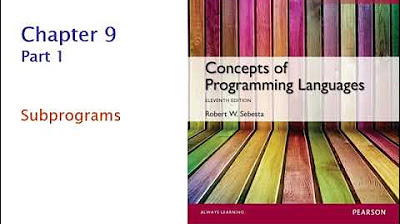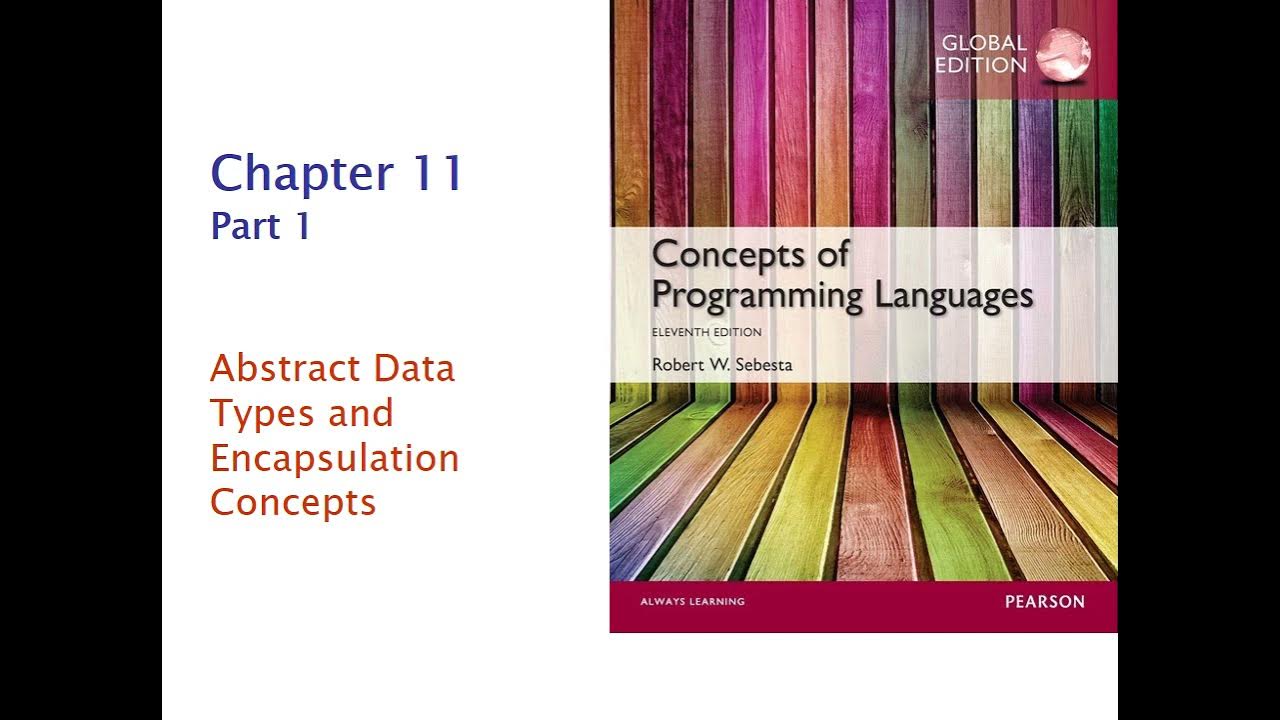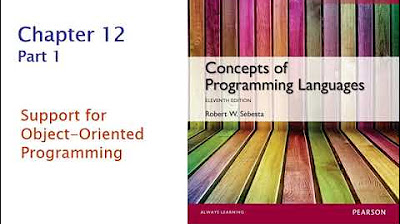COS 333: Chapter 5, Part 2
Summary
TLDRThis lecture delves into the concepts of variable scope and lifetime, exploring how they are defined and interact within programming languages. It distinguishes between local, non-local, and global variables, highlighting scope rules like static and dynamic scoping. The lecture also examines referencing environments and named constants, illustrating their role in enhancing program readability and reliability. The discussion covers various programming languages, showcasing differences in handling scopes and declarations.
Takeaways
- 📚 The lecture focuses on the concepts of scopes and their relation to variable visibility, lifetime, and programming language constructs.
- 🔍 Scope is defined as the range of statements within a program where a variable is visible and can be accessed or modified.
- 📌 Local variables are declared within a specific program unit, while non-local variables are visible but declared outside of the current program unit.
- 🌐 Global variables are a type of non-local variable that can be accessed throughout the program from any function or block.
- 🔑 The scope rules in programming languages determine which variable a name reference corresponds to, especially in cases of ambiguity.
- 📈 Static scope, used by many languages like C and Java, can be determined before runtime based on the program's text, whereas dynamic scope is based on the sequence of program execution at runtime.
- 🔄 Variable shadowing occurs when a variable in a nested scope has the same name as a variable in an outer (static ancestor) scope, hiding the outer variable within the nested scope.
- 🔍📏 The 'let' construct in functional languages like Scheme and ML is used to bind values to names within a specific scope, limited to the expression following the bindings.
- 🛑 The lifetime of a variable differs from its scope; the lifetime is the period during which the variable exists in memory, which may or may not align with its scope.
- 🔑🔒 Named constants are values bound to a name once and do not change, improving program readability and reliability by centralizing value definitions.
- 🏷️ Constants can be static (manifest) or dynamic (read-only variables), with static constants requiring constant expressions and dynamic constants allowing expressions involving variables.
Q & A
What is the scope of a variable in programming?
-The scope of a variable is an attribute that refers to the range of statements within a program over which the variable is visible, meaning it can be accessed and its value can be retrieved or modified.
What is the difference between local and non-local variables?
-Local variables are declared within a specific program unit, such as a function or a block, and are only visible within that unit. Non-local variables, on the other hand, are visible within a program unit but are declared outside of it.
Can you explain the concept of variable shadowing in the context of static scope?
-Variable shadowing, or name masking, occurs when a variable in a nested scope has the same name as a variable in an outer (static ancestor) scope, causing the outer variable to be hidden or inaccessible within the inner scope.
How does the scope of a variable influence its lifetime?
-The scope of a variable often determines its lifetime. For instance, a local variable's lifetime typically begins when its declaration is reached during execution and ends when the scope is exited.
What are the two main approaches to define scoping rules in programming languages?
-The two main approaches to define scoping rules are static scope and dynamic scope. Static scope is determined based on the program's text and is known before runtime, while dynamic scope is determined at runtime based on the call sequence of program units.
Can you provide an example of a programming language construct that relates to scope?
-One example is the 'let' construct in functional programming languages like Scheme or ML, which creates a new scope for the bindings defined within it, limiting their visibility to the expressions within the 'let' construct.
What is the advantage of using named constants in a program?
-Named constants improve the readability and reliability of a program by providing a single point of definition for a value that is used in multiple places, making it easier to understand and maintain.
How does the scope of a variable differ between C# and C++ or Java?
-In C#, the scope of a variable includes the entire block in which it is declared, even statements above the declaration. In contrast, in C++ and Java, the scope of a local variable is limited to the block in which the variable's declaration appears.
What is the main disadvantage of using global variables in programming?
-The main disadvantage of global variables is that they can be accessed and modified by any part of the program, which increases the risk of unintended side effects and makes the program harder to understand and maintain.
Can you explain the difference between static and dynamic named constants?
-Static named constants have their values bound at compile time and must be constant expressions without variables. Dynamic named constants, on the other hand, can have values determined at runtime and can involve variables, but they can only be assigned once.
How does PHP handle access to global variables within functions?
-In PHP, to access a global variable within a function, the programmer must either use the 'global' keyword to redeclare the variable as global within the function or use the '$GLOBALS' array, which contains every global variable.
What is the referencing environment in the context of programming?
-The referencing environment of a statement is the collection of all names that are visible within that statement, determined by the scope rules of the programming language, which can be either static or dynamic.
Outlines

此内容仅限付费用户访问。 请升级后访问。
立即升级Mindmap

此内容仅限付费用户访问。 请升级后访问。
立即升级Keywords

此内容仅限付费用户访问。 请升级后访问。
立即升级Highlights

此内容仅限付费用户访问。 请升级后访问。
立即升级Transcripts

此内容仅限付费用户访问。 请升级后访问。
立即升级5.0 / 5 (0 votes)






